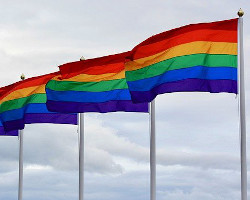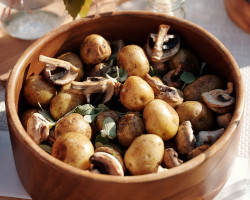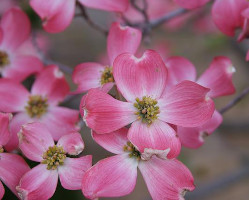Library News
Appreciating Art and Architecture
Art and architecture surround and impact us on a daily basis. Paintings can make us stop and stare in wonder, sculptures can make us yearn to reach out and touch them, and buildings can inspire awe or makes us feel a sense of comfort and peace. Human beings have been making art since the beginning of time; art is a reflection of our society and our culture. Creating art stimulates the mind of the artist/architect while at the same inspiring the viewer in countless ways.  December is Art and Architecture Month and we’re celebrating by featuring a selection of recent art and architecture-related books from our collection on our WU Reads Reading Guide.
December is Art and Architecture Month and we’re celebrating by featuring a selection of recent art and architecture-related books from our collection on our WU Reads Reading Guide.
Architecture is a art when one consciously or unconsciously creates aesthetic emotion in the atmosphere and when this environment produces well being.—Luis Barragán
Good art is art that allows you to enter it from a variety of angles and to emerge with a variety of views.—Mary Schmich
Most Influential Books
This fall, the Hatfield Library offered our first-year and transfer students free ghost mugs stuffed with candy and other items such as pens and stickers. We also conducted a voluntary, informal survey– included in each mug was a slip of paper with a QR code to a survey question: “Which two books have influenced your life the most?”
A special thank you to all those who participated in this survey! Here are the results:
- Witches by Roald Dahl; Ramona Blue by Julie Murphy
- Lord of the Rings by JRR Tolkien; The Shining by Stephen King
- All the Bright Places by Jennifer Niven; and The Hunger Games by Suzanne Collins!
- Talking to Strangers by Malcolm Gladwell; and The Grapes of Wrath by John Steinbeck
- The Stranger by Albert Camus; Ethan Frome by Edith Wharton
- Warrior Cats by Erin Hunter; Game of Thrones by George R. R. Martin
- Demian by Herman Hesse; 1984 by George Orwell
- The Glass Castle by Jeannette Walls; The Song of Achilles by Madeline Miller
- The Poisonwood Bible by Barbara Kingsolver; A Little Life by Hanya Yanagihara

Awesome Autumn

It’s raining, the leaves are falling, and there is a nip in the air–hooray, it’s fall! Time to uncover your coziest sweaters, discover your favorite hot beverage at the Bistro, and revel in all things pumpkin! There’s something magical about grabbing your rain gear, tromping around among the colorful leaves, and listening to the geese fly overhead. Fall tourism or “leaf peeping” is big business in the New England states, but Oregon puts on some pretty impressive leaf shows as well. Fall bird migration is also in full swing so it is the perfect time to explore bird watching–take a walk at Minto Brown or visit nearby wildlife refuges like Ankeny or Basket Slough. And if you just feel like curling up in a comfy chair with a good book, check out the interesting selection of autumn-related print and e-books listed on our WU Reads Reading Guide.
Wild is the music of the autumnal winds amongst the faded woods. –William Wordsworth
Celebrate LGBTQ+ History Month
 In 1994, Rodney Wilson, a high school teacher in Missouri, decided that a month should be dedicated to celebrating and exploring gay and lesbian history. Along with other teachers and community leaders, they chose October to coincide with National Coming Out Day, which falls on October 11th. Several national organizations endorsed the idea and in 2006, Equality Forum, “a national and international LGBT civil rights organization with an educational focus,” took on the responsibility for coordinating the month-long celebration. LGBTQ+ History Month provides us with the opportunity to recognize and discover the vital role of gay, lesbian, bisexual, and transgender people in American history. Thirty-one important lesbian, gay, bisexual or transgender individuals are highlighted and celebrated throughout the month; this year, Oregon’s Governor, Kate Brown, was chosen as one of these icons and her achievements will be honored on October 10th. In celebration of LGBTQ+ History Month, checkout these recently published books listed on our WU Reads Reading Guide.
In 1994, Rodney Wilson, a high school teacher in Missouri, decided that a month should be dedicated to celebrating and exploring gay and lesbian history. Along with other teachers and community leaders, they chose October to coincide with National Coming Out Day, which falls on October 11th. Several national organizations endorsed the idea and in 2006, Equality Forum, “a national and international LGBT civil rights organization with an educational focus,” took on the responsibility for coordinating the month-long celebration. LGBTQ+ History Month provides us with the opportunity to recognize and discover the vital role of gay, lesbian, bisexual, and transgender people in American history. Thirty-one important lesbian, gay, bisexual or transgender individuals are highlighted and celebrated throughout the month; this year, Oregon’s Governor, Kate Brown, was chosen as one of these icons and her achievements will be honored on October 10th. In celebration of LGBTQ+ History Month, checkout these recently published books listed on our WU Reads Reading Guide.
For more information:
First, We Eat…
 What do potatoes, mushrooms, and rice have in common? Besides being delicious (depending on who you talk to, of course) and nutritious, these three food sources share the same appreciation month. That’s right–September is National Potato Month, National Mushroom Month, and National Rice Month. Who knew? And did you know that potatoes are grown in all 50 states? And although often considered a vegetable, a mushroom is neither a plant nor animal. In the world of biology, mushrooms make up their own kingdom–Fungi! When it comes to rice, the average American eats 27 pounds of rice a year. Rice constitutes 20% of the world’s dietary energy supply, edging out wheat at 19%. Food scarcity is a growing concern worldwide so it seems appropriate to take a moment to think about the food we consume and appreciate the nutritional value in unassuming food sources such as potatoes, mushrooms, and rice. Checkout related sources from our collection on our WU Reads Reading Guide.
What do potatoes, mushrooms, and rice have in common? Besides being delicious (depending on who you talk to, of course) and nutritious, these three food sources share the same appreciation month. That’s right–September is National Potato Month, National Mushroom Month, and National Rice Month. Who knew? And did you know that potatoes are grown in all 50 states? And although often considered a vegetable, a mushroom is neither a plant nor animal. In the world of biology, mushrooms make up their own kingdom–Fungi! When it comes to rice, the average American eats 27 pounds of rice a year. Rice constitutes 20% of the world’s dietary energy supply, edging out wheat at 19%. Food scarcity is a growing concern worldwide so it seems appropriate to take a moment to think about the food we consume and appreciate the nutritional value in unassuming food sources such as potatoes, mushrooms, and rice. Checkout related sources from our collection on our WU Reads Reading Guide.
Potatoes have much more staying power than caviar.
— Mark Helprin
Dog Days of Summer

We’ve all heard of the “dog days of summer” but what does that phrase really mean and where did it come from? Many of us would define the term as referring to the hottest days of summer, but after just a little investigation, it is clear that there are a lot of different theories floating around about this phrase. The Farmers’ Almanac is pretty specific; according to this source, the “dog days” run from July 3 through August 11 and they are typically the “hottest and most unbearable days of the season.” The Almanac mentions that some think this term came about because these hot days aren’t “fit for a dog.” Other people speculate that the phrase comes from the notion that during the hot days of summer, dogs become less active and laze about in the sun or that the extreme heat during this part of the year causes some dogs to go mad. But the term has more to do with the stars than dogs, according to the Oxford English Dictionary: “The hottest part of the summer, associated in ancient times with heliacal rising of the Dog Star in the Mediterranean area, and formerly considered to be the most unhealthy period of the year and a time of ill omen.” Yikes! And Merriam-Webster defines “dog days” as “the period between early July and early September when the hot sultry weather of summer usually occurs in the northern hemisphere.” In any event, the Hatfield Library would like to celebrate the “dog days of summer” by highlighting books related to our furry, four-legged, canine friends on our WU Reads Reading Guide. Head on over to the library and “fetch” one of these titles for your reading pleasure!
More information:
https://www.farmersalmanac.com/why-are-they-called-dog-days-of-summer-21705
https://www.oed.com/view/Entry/56426?redirectedFrom=%22dog+days%22#eid
https://www.merriam-webster.com/dictionary/dog%20days
https://www.milkbone.com/national-dog-month
Talk to the Animals
 Did you know that the oldest zoo in the United States (in operation since 1874) is the Philadelphia Zoo? And one of the biggest aquariums in the U.S. is located right here on the West Coast at the Monterey Bay Aquarium. The Oregon Zoo, situated on 64 acres in Portland, features over 2,500 animals and attracts more than 1.5 million visitors a year. Zoos and aquariums have been around for centuries, and they have often been the center of controversies. Some of the common and well-founded criticisms revolve around treatment of animals, space concerns, etc. But at their best, zoos and aquariums prioritize animal welfare, conservation, research, and education. June is National Zoo and Aquarium Month and we’re celebrating by featuring a diverse assortment of zoo and aquarium-related titles from our collection on our WU Reads Reading Guide.
Did you know that the oldest zoo in the United States (in operation since 1874) is the Philadelphia Zoo? And one of the biggest aquariums in the U.S. is located right here on the West Coast at the Monterey Bay Aquarium. The Oregon Zoo, situated on 64 acres in Portland, features over 2,500 animals and attracts more than 1.5 million visitors a year. Zoos and aquariums have been around for centuries, and they have often been the center of controversies. Some of the common and well-founded criticisms revolve around treatment of animals, space concerns, etc. But at their best, zoos and aquariums prioritize animal welfare, conservation, research, and education. June is National Zoo and Aquarium Month and we’re celebrating by featuring a diverse assortment of zoo and aquarium-related titles from our collection on our WU Reads Reading Guide.
For more information on zoos and aquariums see:
The World Association of Zoos and Aquariums (https://www.waza.org/)
Oregon Zoo (https://www.oregonzoo.org/)
May Flowers
 As the old saying goes, “April showers bring May flowers,” and that is certainly true all around the great Northwest! Flowers, blossoms, and blooms are everywhere this time of year, delighting our eyes and our noses (unless we suffer from allergies). From lilac bushes to dogwood trees, “everything’s coming up roses” right now. Speaking of roses, they are just starting to open up in all their classic beauty and will brighten our lives all summer long. And we can’t forget the delicate beauty of native plants such as trillium and camas. So as the academic year winds down, remember to get outside, enjoy the glorious colors of the flowers that surround us, and “take time to smell the roses!” And while you’re at it, why not check out the WU Reads Reading Guide for an interesting selection of flower-related books available from the University Libraries?
As the old saying goes, “April showers bring May flowers,” and that is certainly true all around the great Northwest! Flowers, blossoms, and blooms are everywhere this time of year, delighting our eyes and our noses (unless we suffer from allergies). From lilac bushes to dogwood trees, “everything’s coming up roses” right now. Speaking of roses, they are just starting to open up in all their classic beauty and will brighten our lives all summer long. And we can’t forget the delicate beauty of native plants such as trillium and camas. So as the academic year winds down, remember to get outside, enjoy the glorious colors of the flowers that surround us, and “take time to smell the roses!” And while you’re at it, why not check out the WU Reads Reading Guide for an interesting selection of flower-related books available from the University Libraries?
“If you have a garden and a library, you have everything you need.” — Cicero
The Power of Poetry
 In April 1996, the Academy of American Poets founded National Poetry Month to remind us all “that poets have an integral role to play in our culture and that poetry matters.” One of the primary goals of the month is to “highlight the extraordinary legacy and ongoing achievement of American poets.” Over the years, Poetry Month has become a huge literary observance with readers, students, teachers, librarians, booksellers, publishers, and, of course, poets from around the country participating in this month-long celebration in a whole host of different ways. Many special activities, readings, and virtual events are scheduled to occur during April in honor of poetry. For instance, on April 29, poetry lovers are encouraged to participate in “Poem in Your Pocket Day.” On this day, select a poem, carry it with you, and share it with others wherever you go, including on social media using the hashtag #PocketPoem. Poetry can expose us to the beauty, anger, pain, and joy all around us; it makes us think, wonder, cry, rage, and chuckle. Join us this month in celebrating the magic of poetry and poets!
In April 1996, the Academy of American Poets founded National Poetry Month to remind us all “that poets have an integral role to play in our culture and that poetry matters.” One of the primary goals of the month is to “highlight the extraordinary legacy and ongoing achievement of American poets.” Over the years, Poetry Month has become a huge literary observance with readers, students, teachers, librarians, booksellers, publishers, and, of course, poets from around the country participating in this month-long celebration in a whole host of different ways. Many special activities, readings, and virtual events are scheduled to occur during April in honor of poetry. For instance, on April 29, poetry lovers are encouraged to participate in “Poem in Your Pocket Day.” On this day, select a poem, carry it with you, and share it with others wherever you go, including on social media using the hashtag #PocketPoem. Poetry can expose us to the beauty, anger, pain, and joy all around us; it makes us think, wonder, cry, rage, and chuckle. Join us this month in celebrating the magic of poetry and poets!
To find out more about National Poetry Month, go to https://poets.org/national-
If I feel physically as if the top of my head were taken off, I know that is poetry. –Emily Dickinson
